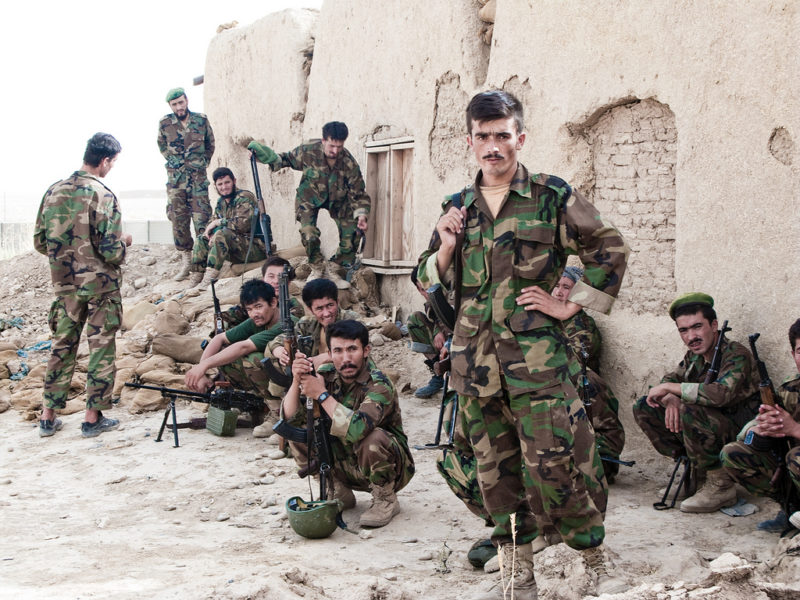The Afghan government controls less than 60 percent of the country’s territory, according to a quarterly report released on January 30, 2017 by the U.S. Special Inspector General for Afghan Reconstruction (SIGAR). The security situation in Afghanistan has been deteriorating in recent years as a result of a revived Taliban insurgency, an increasing presence of other radical Islamist groups including al-Qaeda and ISIS, and a diminishing security force. Together, these factors have resulted in a 15 percent decrease in territory held by the government since 2015, and an increase in the number of districts with a growing insurgent influence.
The Taliban, once thought to be losing its control over Afghan society, has carried out numerous offensives since 2015. In June 2015, the Taliban controlled nine districts in the country, primarily in Helmand Province in the south,  Ghazni and
Ghazni and
Zabul Provinces in the southeast, Badakhshan Province in the northeast, and Sari-i Pul Province in the north. The most recent SIGAR report suggests that, of the 407 districts of Afghanistan’s 34 provinces, only 233 districts are under government control or influence. Meanwhile, 41 districts in 15 provinces are under the control or influence of insurgent groups, and an additional 133 districts are ‘contested’.
The deteriorating security situation and Taliban resurgence have provided an opportunity for other terrorist groups to exploit gaps in state capacity and build their ranks. For instance, under these conditions, al-Qaeda has established training camps in non-state controlled areas. Two of these training camps in the Shorabak district, within the southern province of Kandahar, operated for over a year before U.S. forces discovered them. One of the camps was 30 square miles in size and, at the time, was the largest training facility found in the country since the beginning of the Afghan War, demonstrating a significant intelligence lapse by U.S. and Afghan security forces. Additionally, while U.S. and Afghan estimates placed the number of al-Qaeda operatives in the country at 50-100 at the time, over 150 operatives were found in just one of these two camps, which demonstrates how groups can operate under the radar in such a complex threat environment. A NATO assessment from April 2016 reported that while the Taliban was active in 15 provinces, al-Qaeda was active in the Paktia, Paktika, Khost, Nuristan, and Kunar provinces along the country’s eastern border, where the group was looking to increase its presence by establishing military camps.
ISIS, also active in Afghanistan, was previously believed to have reached a peak in 2015 and has since declined due to efforts by coalition and Afghan forces. The group did, however, carry out large-scale attacks in 2016, such as a suicide attack in July that killed over 80 Hazara protestors in Kabul and injured hundreds more, and it seems to be gaining new ground. ISIS has established a foothold in the country’s northeast Nangarhar Province, causing division in the community between those in support of the group and those opposed to it. Afghans in the area find themselves caught between ISIS, the Taliban, and international forces. With airstrikes destroying homes and causing civilian casualties, and the inability of the government and Taliban to provide an adequate standard of living, ISIS may be able to increase its presence in the country, further complicating an already complex threat environment.

With a recent attack by ISIS militants in Jowzjan Province, which killed at least six International Committee of the Red Cross (ICRC) employees, and separate raids by both ISIS and the Taliban on February 17, 2017, collectively leaving 22 security personnel dead, it is clear that more needs to be done to create a stable security environment and contain the threat posed by terrorist and insurgent groups.
The Afghan National Defense and Security Forces (ANDSF) suffer high rates of attrition. From January 1 to August 19, 2016, a total of 5,523 ANDSF service members were killed and an additional 9.665 were wounded. With the number of troops depleting, commanders cannot spare troops from the frontlines, and specialized training cannot be provided. Security institutions in the country have also been accused of lacking coordination, committing largescale military payroll fraud, wasting military resources, and enlisting corrupt and unqualified leadership. With the world looking towards Iraq and Syria, Afghanistan has quickly become again a complex and volatile security environment. Under these conditions, it is likely that conflict in Afghanistan will only intensify in 2017.
Cover Photo: ANSF Training (2010), by Andy Barnham via Wikimedia. Licensed under CC BY 2.0.
In-text Photo 1: Map of Afghanistan’s Provinces (2005), by Congressional Research Service via Wikimedia. Listed under Public Domain.
In-text Photo 2: Afghan National Police Line-up (2009), by Chad J. McNeeley via Wikimedia. Listed under Public Domain.
Disclaimer: Any views or opinions expressed in articles are solely those of the authors and do not necessarily represent the views of the NATO Association of Canada.



